“…The way out is not to slash and burn, it’s to innovate.”
– Steve Jobs
This week we mourn the loss of one of the greatest innovators of our time.
Steve Jobs, founder, long-time CEO, and chief creative genius behind all things Apple passed away Wednesday at age 56.
In his lifetime, Jobs brought us new ways of experiencing technology life that we likely may not have thought of on our own. In fact, the Man Behind the Mac has been named on some 313 issued patents. That’s excluding any applications that may have failed to make the cut and whatever countless other innovations he may have influenced that were never patented.
Even more amazing is the variety of items he had his hands in designing over the years. Steve Job’s design patents cover everything from the iconic round mouse and the packing for the iPod to the glass stairs in Apple Store.
Here are just 5 of Job’s most interesting creations: Continue reading “Steve Jobs, A Legend in Innovation”


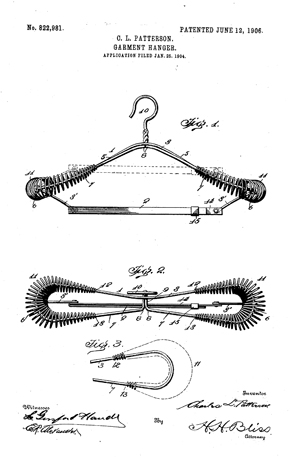 The coat hanger was invented in response to a lack of coat hooks in an office building in Jackson, Michigan in 1903. Albert J. Parkhouse worked for Timberlake Wire and Novelty Company which made lampshade frames and other wire items. One day, he arrived at work to discover that all the coat hooks were occupied. Parkhouse did not like having his winter coat getting wrinkled on the back of a chair all day. He decided to find a solution.
The coat hanger was invented in response to a lack of coat hooks in an office building in Jackson, Michigan in 1903. Albert J. Parkhouse worked for Timberlake Wire and Novelty Company which made lampshade frames and other wire items. One day, he arrived at work to discover that all the coat hooks were occupied. Parkhouse did not like having his winter coat getting wrinkled on the back of a chair all day. He decided to find a solution. Have you ever wondered how those tiny beads of ice cream that you can buy at the mall and amusement parks are made? Dippin’ Dots are cryogenically frozen ice cream balls made with the same ingredients as regular ice cream. The ice cream treat was invented by microbiologist Curt Jones in 1987.
Have you ever wondered how those tiny beads of ice cream that you can buy at the mall and amusement parks are made? Dippin’ Dots are cryogenically frozen ice cream balls made with the same ingredients as regular ice cream. The ice cream treat was invented by microbiologist Curt Jones in 1987.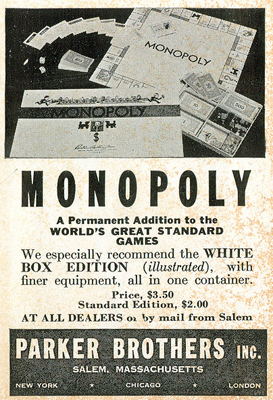 Charles Darrow, an unemployed man living in Germantown, Pennsylvania, created the board game Monopoly in the evenings while trying to make ends meet during the day. In the game, all players have the chance to buy and sell real estate. Living during the great depression, this board game gave the hard pressed workers of the time a chance for fantasy and distraction from their difficult lives.
Charles Darrow, an unemployed man living in Germantown, Pennsylvania, created the board game Monopoly in the evenings while trying to make ends meet during the day. In the game, all players have the chance to buy and sell real estate. Living during the great depression, this board game gave the hard pressed workers of the time a chance for fantasy and distraction from their difficult lives.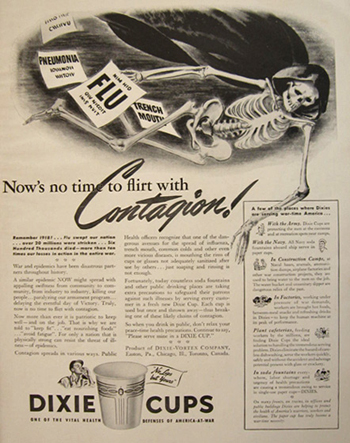 Today, paper cups seem like something that of course everyone uses. No one would ever share a cup with a stranger just to have a drink of water. The diseases that could spread this way are apparent to us all. But until the beginning of the 20th century, this was not the case. Everyone drank out of the same water source with a shared glass, drinking tin or dipper.
Today, paper cups seem like something that of course everyone uses. No one would ever share a cup with a stranger just to have a drink of water. The diseases that could spread this way are apparent to us all. But until the beginning of the 20th century, this was not the case. Everyone drank out of the same water source with a shared glass, drinking tin or dipper.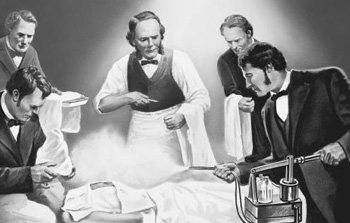 Joseph Lister helped make surgery a much safer undertaking. Before Lister’s discovery, surgery was a last resort because of the high rate of post-operative infections. People believe that it was bad air in a hospital that caused infections after surgery. Preventative measures to prevent infections and diseases included airing out a hospital during the day.
Joseph Lister helped make surgery a much safer undertaking. Before Lister’s discovery, surgery was a last resort because of the high rate of post-operative infections. People believe that it was bad air in a hospital that caused infections after surgery. Preventative measures to prevent infections and diseases included airing out a hospital during the day.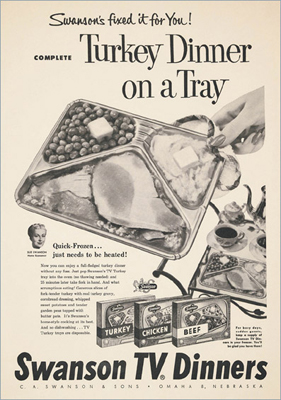 When Swanson introduced the TV dinner in 1954, it was an instant success. The frozen meal fit in perfectly with the nation’s obsession with prepackaged, convenience foods and a growing love of the television. At a price of 98 cents, the first meal sold was basically a Thanksgiving dinner with turkey, cornbread dressing, peas and sweet potatoes. Swanson hoped to sell about five thousand dinners the first year. Instead, sales hit more than 10 million.
When Swanson introduced the TV dinner in 1954, it was an instant success. The frozen meal fit in perfectly with the nation’s obsession with prepackaged, convenience foods and a growing love of the television. At a price of 98 cents, the first meal sold was basically a Thanksgiving dinner with turkey, cornbread dressing, peas and sweet potatoes. Swanson hoped to sell about five thousand dinners the first year. Instead, sales hit more than 10 million.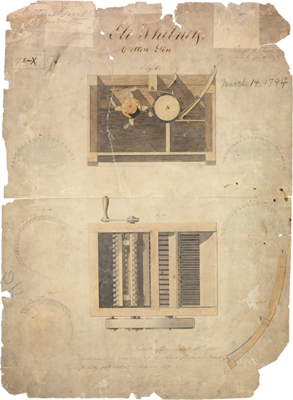 An invention can be so valuable as to be worthless to the inventor. Eli Whitney came to this conclusion because of the financial failure that was the cotton gin. Whitney gained fame and notoriety from his invention but did not gain the wealth he had anticipated.
An invention can be so valuable as to be worthless to the inventor. Eli Whitney came to this conclusion because of the financial failure that was the cotton gin. Whitney gained fame and notoriety from his invention but did not gain the wealth he had anticipated.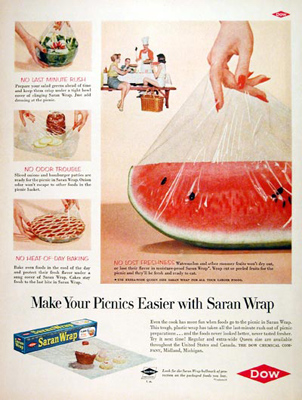 Saran wrap is another product which can be added to the list of accidental inventions. Ralph Wiley was not even working as a scientist when he discovered the substance that would become Saran wrap.
Saran wrap is another product which can be added to the list of accidental inventions. Ralph Wiley was not even working as a scientist when he discovered the substance that would become Saran wrap.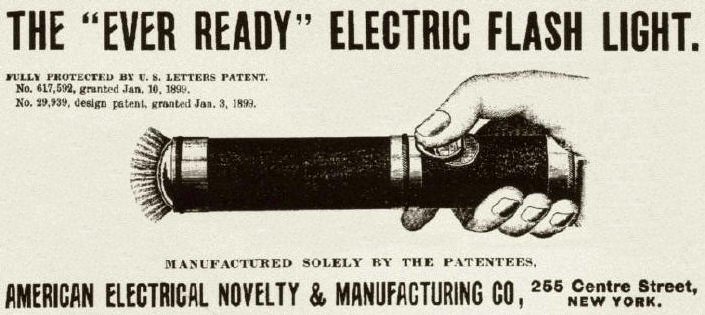 Later, Cowen came up with the idea of decorative lighting for a flower pot. This light up device was composed of a metal tube, light bulb and ran on a dry cell battery. This garden decoration was also a failure.
Later, Cowen came up with the idea of decorative lighting for a flower pot. This light up device was composed of a metal tube, light bulb and ran on a dry cell battery. This garden decoration was also a failure.